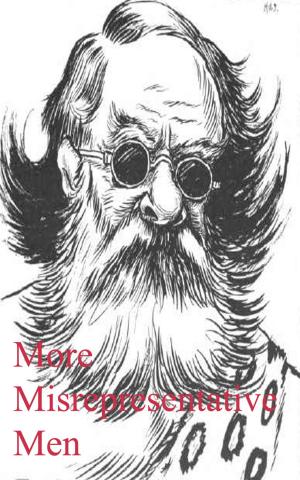| Author: | Edwin Tappan Adney Howard Irving Chapelle | ISBN: | 9783736405721 |
| Publisher: | anboco | Publication: | August 13, 2016 |
| Imprint: | Language: | English |
| Author: | Edwin Tappan Adney Howard Irving Chapelle |
| ISBN: | 9783736405721 |
| Publisher: | anboco |
| Publication: | August 13, 2016 |
| Imprint: | |
| Language: | English |
The bark canoes of the North American Indians, particularly those of birch bark, were among the most highly developed of manually propelled primitive watercraft. Built with Stone Age tools from materials available in the areas of their use, their design, size, and appearance were varied so as to create boats suitable to the many and different requirements of their users. The great skill exhibited in their design and construction shows that a long period of development must have taken place before they became known to white men. The Indian bark canoes were most efficient watercraft for use in forest travel; they were capable of being propelled easily with a single-bladed paddle. This allowed the paddler, unlike the oarsman, to face the direction of travel, a necessity in obstructed or shoal waters and in fast-moving streams. The canoes, being light, could be carried overland for long distances, even where trails were rough or nonexistent. Yet they could carry heavy loads in shallow water and could be repaired in the forest without special tools. Bark canoes were designed for various conditions: some for use in rapid streams, some for quiet waters, some for the open waters of lakes, some for use along the coast. Most were intended for portage in overland transportation as well. They were built in a variety of sizes, from small one-man hunting and fishing canoes to canoes large enough to carry a ton of cargo and a crew, or a war-party, or one or more families moving to new habitations. Some canoes were designed so that they could be used, turned bottom up, for shelter ashore...
The bark canoes of the North American Indians, particularly those of birch bark, were among the most highly developed of manually propelled primitive watercraft. Built with Stone Age tools from materials available in the areas of their use, their design, size, and appearance were varied so as to create boats suitable to the many and different requirements of their users. The great skill exhibited in their design and construction shows that a long period of development must have taken place before they became known to white men. The Indian bark canoes were most efficient watercraft for use in forest travel; they were capable of being propelled easily with a single-bladed paddle. This allowed the paddler, unlike the oarsman, to face the direction of travel, a necessity in obstructed or shoal waters and in fast-moving streams. The canoes, being light, could be carried overland for long distances, even where trails were rough or nonexistent. Yet they could carry heavy loads in shallow water and could be repaired in the forest without special tools. Bark canoes were designed for various conditions: some for use in rapid streams, some for quiet waters, some for the open waters of lakes, some for use along the coast. Most were intended for portage in overland transportation as well. They were built in a variety of sizes, from small one-man hunting and fishing canoes to canoes large enough to carry a ton of cargo and a crew, or a war-party, or one or more families moving to new habitations. Some canoes were designed so that they could be used, turned bottom up, for shelter ashore...















